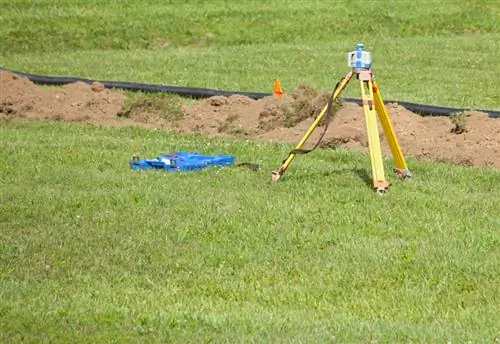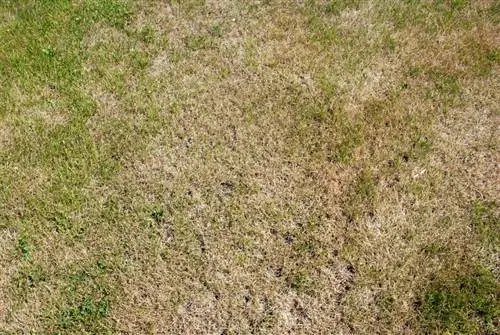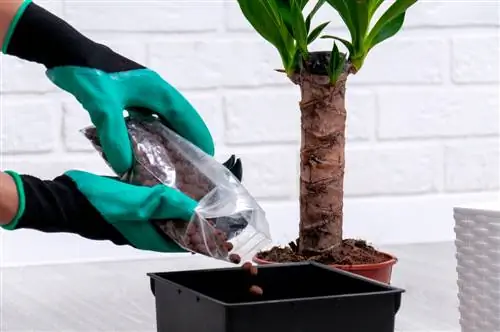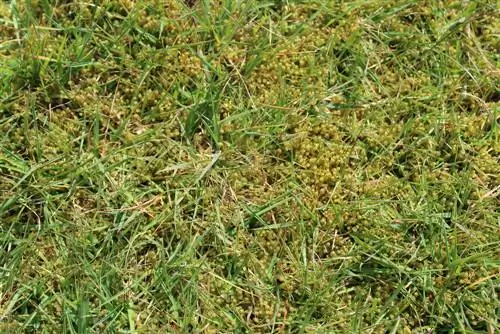- Author admin [email protected].
- Public 2023-12-16 16:46.
- Last modified 2025-01-23 11:20.
A very solid surface or depressions in the ground prevent rainwater from draining away. Puddles form on the lawn and drain slowly. This doesn't affect the grass roots at all. In most cases the problem can be solved with drainage.
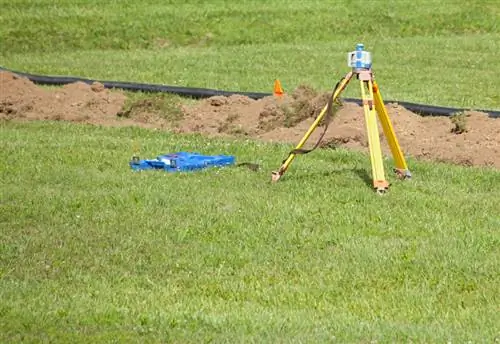
How can I create drainage for my lawn?
Lawn drainage helps when the ground is too wet by draining away excess water. The drainage pipes are laid with a gradient of around 3% and embedded in a 15 cm thick bed of gravel and fleece. Compensate for depressions in the ground beforehand and possibly plan a soakaway pit.
Water can't drain
The cause of a wet lawn is that rainwater cannot drain away because the soil is too compacted.
Even in uneven gardens there are puddles on the lawn because the water collects in the depressions and only slowly seeps into the ground.
Before you create a lawn, you should level the area and fill in depressions. On slopes, make sure that the rainwater flows into the open air or is collected in a septic tank.
Laying drainage yourself
Laying drainage yourself to drain the lawn is not as easy as most hobby gardeners believe. Get advice from an experienced garden technician or hire a company to carry out the drainage professionally.
It is important that the pipes are laid with a gradient of around three percent so that the water can drain away and the lawn can dry. Otherwise it may back up and lead to further flooding.
Depending on the size, you will need a small earth excavator for earthworks and the insertion of gravel, fleece and pipes.
This is what you need for drainage
- Drainage pipes
- Flushing pipes
- gravel
- fleece
- Spade
- If necessary, a small excavator
- Septic tank
Laying drainage
The drainage pipes have slots at the top through which the water gets into the pipes. To prevent the pipes from becoming clogged, they are placed in a gravel bed at least 15 centimeters thick and covered with fleece.
They should be buried at least 50 to 60 centimeters deep in the ground and covered with soil
Mark the route of the pipes so that you don't accidentally damage them later when digging.
Tips & Tricks
When draining the lawn, do not discharge the water onto the street or even into the city sewer. In most communities this is not allowed. To be on the safe side, find out beforehand what requirements you have to comply with when installing a drainage system.

